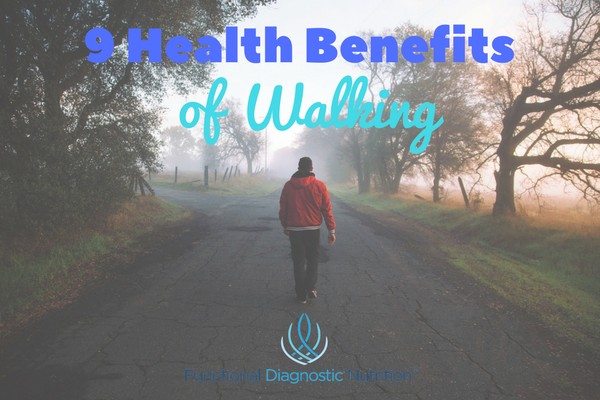To be healthy, it is important to exercise regularly. If you are looking for an exercise that you can do daily and that is simple to do, then perhaps you should consider walking. Of course, taking regular walks has some benefits that aren’t health related. It doesn’t require expensive equipment to do. All you need is a good pair of walking shoes! There are a lot of places where you can go and walk for free, such nice neighborhoods and local parks. But, walking regularly is also beneficial to your body and your overall health.
Here are the top health benefits of walking regularly
Improves Circulation
If you want to be healthy, getting the blood moving and having good blood circulation is one of the most important things that you can do. The blood carries oxygen and nutrients to every cell and organ of the body, including the brain. When circulation is poor, symptoms are usually felt in the extremities first, with a feeling of coldness or pins and needles in the hands and feet. But poor circulation can also cause symptoms such as fatigue, dry skin and dizziness as well. Walking for at least 30 minutes a day can help to improve circulation, and is even more important for those who have sedentary jobs.
Strengthens muscles
Walking regularly helps to build and strengthen the muscles. The muscles that benefit the most from this type of workout are those found in the ankles, calves, thighs, hips, buttocks, abdominal muscles and arms. But walking regularly doesn’t just strengthen muscles, but it also helps to build endurance which also means less fatigue.
Improves sleep
Getting out and taking a nice stroll can help to improve your sleep. Those who strap on their shoes and get out to walk regularly reportedly fall asleep in less time. They also increased the length of time they stayed asleep. And taking a walk daily is one of the best ways to beat chronic insomnia as well.
Helps your mood
Feeling a little blue or a little anxious? Taking a nice walk can help. Like other types of cardio exercise, walking reduces levels of Cortisol, the stress hormone, while simultaneously increasing endorphins, which are the feel good, happy chemicals of the brain. Walking for as little as 12 minutes can do this and will help you feel better.
Keeps your brain healthy
Walking increases circulation to the brain which in turn can have other benefits. The increased circulation to the brain increases oxygen and the delivery of important nutrients that are necessary for healthy brain function. Increased oxygen to the brain can help to keep you mentally sharp. It has also been show to improve attention and focus. And when the brain gets the oxygen and nutrients it need, your risk of contracting Alzheimer’s disease lowers.
Supports healthy joints
Regularly walking can help to strengthen joints. Blood does not circulate directly to most joint cartilage. Instead, joint fluid circulates around the joints delivering vital nutrients and oxygen as we move. Walking is the perfect way to circulate that fluid providing the nourishment your joints need.
Improves blood sugar levels
As you walk your body uses glucose for energy, which can ultimately lower blood sugar levels. Just 15 minutes of walking after a meal can help to prevent blood sugar from spiking as well. For those who are obese or pre-diabetic, control of blood sugar through regular walking may help to prevent type 2 diabetes.
Strengthens immune system
Each time you are active the body releases of white blood cells that help to destroy invading viruses and bacteria. Regular exercise also reduces stress. With stress comes the release of cortisol, the stress hormone. When cortisol circulates in the blood stream for extended periods of time, it puts stress on the immune system and compromises immune system function. Walking regularly helps to counteract the stress, lower cortisol levels and strengthen immune system function.
Can be done by people at all different health levels
You don’t have to be in shape to start walking. As long as you have mobility and are physically able to walk, this form of exercise can be done by people who are at all levels of fitness. If you are very out of shape, it is okay to start walking for shorter periods. The more often you take the time for good walking exercise, the more quickly you will build up strength and be able to walk for longer periods of time. The only requirement for walking is that you have a good pair of shoes that are made for walking.
If you are In the process of healing from HPA Axis dysfunction (known by many as adrenal fatigue), gentle, short walks are a great form of exercise and will be much more gentle on your adrenals than other moderate and intense forms of exercise.
If you want to get on the path to health, walking may be just the right exercise to help you get there. Just remember that it’s okay to work your way up to walking for longer periods of time. As you become stronger and your stamina increases, then you can work your way up to walking 10000 steps a day. For most people, that equals approximately 5 miles. A fitness tracker or pedometer can help you gauge how many steps you are currently taking and can help you set step goals.







